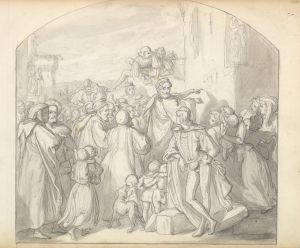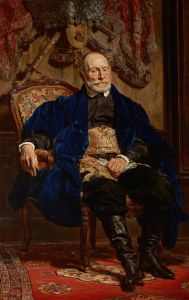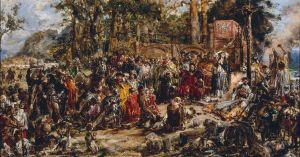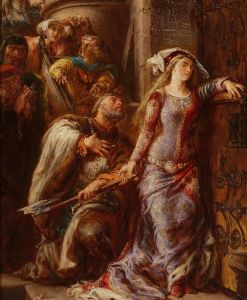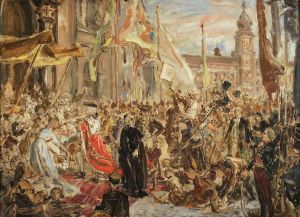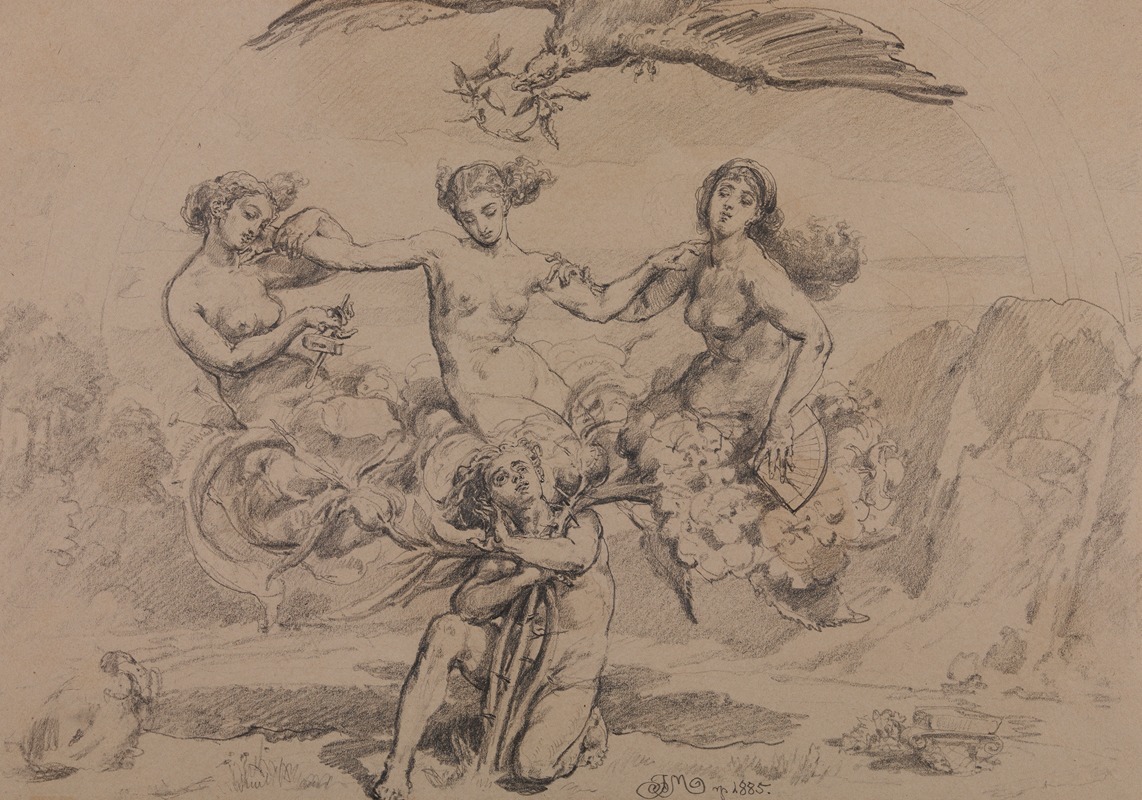
The History of Human CiviIIzation – architecture, sculpture and painting
A hand-painted replica of Jan Matejko’s masterpiece The History of Human CiviIIzation – architecture, sculpture and painting, meticulously crafted by professional artists to capture the true essence of the original. Each piece is created with museum-quality canvas and rare mineral pigments, carefully painted by experienced artists with delicate brushstrokes and rich, layered colors to perfectly recreate the texture of the original artwork. Unlike machine-printed reproductions, this hand-painted version brings the painting to life, infused with the artist’s emotions and skill in every stroke. Whether for personal collection or home decoration, it instantly elevates the artistic atmosphere of any space.
"The History of Human Civilization – Architecture, Sculpture and Painting" is a painting by the renowned Polish artist Jan Matejko. Jan Matejko, born on June 24, 1838, in Kraków, Poland, and died on November 1, 1893, in the same city, is celebrated for his detailed and historically rich paintings that often depict significant events and figures in Polish history.
This particular painting, "The History of Human Civilization – Architecture, Sculpture and Painting," is one of Matejko's lesser-known works compared to his grand historical canvases like "The Battle of Grunwald" or "The Prussian Homage." However, it still reflects his deep interest in the cultural and artistic achievements of humanity.
The painting is an allegorical representation that aims to encapsulate the essence of human civilization through its artistic achievements in architecture, sculpture, and painting. Matejko's work often includes a wealth of historical detail and symbolism, and this painting is no exception. It features a variety of figures and elements that symbolize different periods and styles in the history of art.
In the painting, one can observe representations of classical architecture, such as columns and arches, which may allude to the grandeur of ancient civilizations like Greece and Rome. Sculptural elements in the painting likely reference significant works and styles from different eras, showcasing the evolution of this art form from antiquity to Matejko's present day. The inclusion of painting within the artwork itself serves as a meta-commentary on the role of visual art in documenting and shaping human history.
Jan Matejko was known for his meticulous research and attention to historical accuracy, and while this painting is more allegorical than some of his other works, it still reflects his dedication to portraying historical themes with depth and precision. His use of vibrant colors, dynamic compositions, and expressive figures helps to convey the richness and diversity of human artistic achievement.
Matejko's influence on Polish art and national identity cannot be overstated. He was a pivotal figure in the 19th-century Polish art scene and played a crucial role in the development of historical painting in Poland. His works are celebrated for their ability to evoke national pride and reflect the cultural heritage of Poland.
"The History of Human Civilization – Architecture, Sculpture and Painting" is housed in the collection of the National Museum in Kraków, which holds many of Matejko's works. The museum is dedicated to preserving and showcasing Polish art and history, and Matejko's paintings are among its most treasured pieces.
In summary, Jan Matejko's "The History of Human Civilization – Architecture, Sculpture and Painting" is a rich, allegorical work that encapsulates the artist's dedication to depicting the cultural and artistic achievements of humanity. Through his detailed and symbolic representation, Matejko offers a visual narrative that celebrates the enduring legacy of human creativity and its impact on civilization.





![Temple of Dandour [Dendûr], Nubia.](/imgs/217545/s/david-roberts-temple-of-dandour-dendur-nubia-8921547f.jpg)
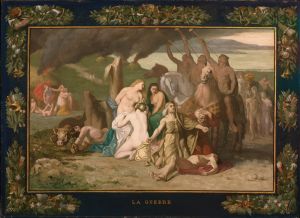


![Proposed treatment for roller rink, Elizabeth, N.J.] [Wall elevations, royal scheme](/imgs/249389/s/winold-reiss-proposed-treatment-for-roller-rink-elizabeth-nj-wall-elevations-royal-scheme-1c7e4bf2.jpg)
